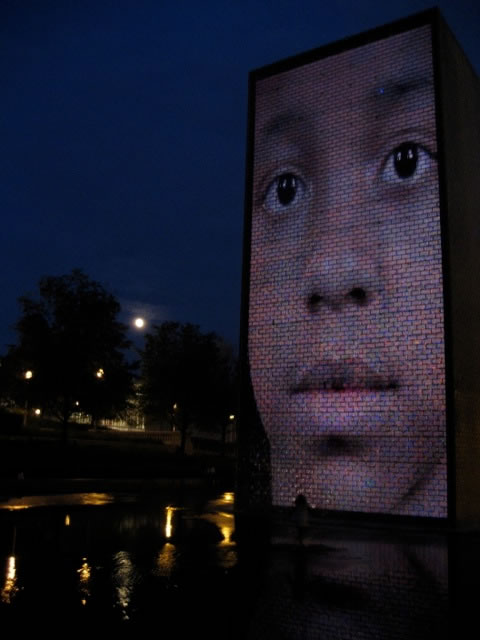
Studying the Face of People and
the Buildings that they Make
In the past, we’ve talked about the modeling of a brand relationships — the relating [the carrying, the holding and the retelling] of that content, product or story in a manner that it can be acted on, and within, as a cultural experience or employee manifestation of this is who we are, how we think, and what we do; it’s our story, and it’s who we are now.
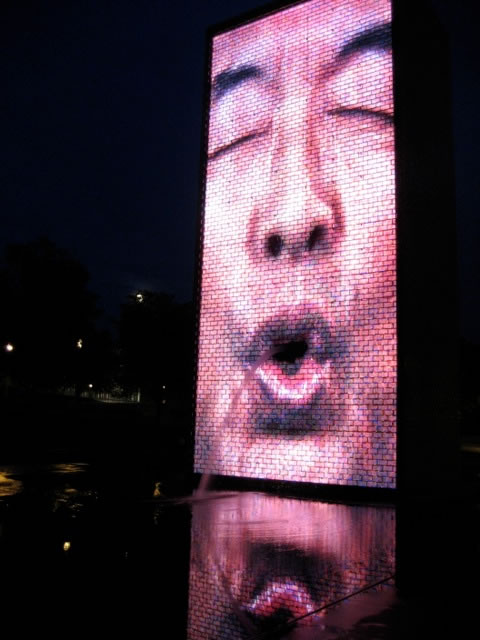
Same with a study of the face — watching people as they speak, studying their eyes, the gestures that they make, you can see the calligraphy of their soulful intentions — the real “truth of them.”
I like to listen and watch people, link to them, and study what they say, and how they say it — what lexicon of characters and coding emerges? I learned this from my Mother, Lila Girvin, who would say — “let’s go watch people.” Or, “let’s walk the neighborhood and see what people are doing.” What that taught me was that there was an art to watching people, coming from my Mother, who is full of artful things to do.
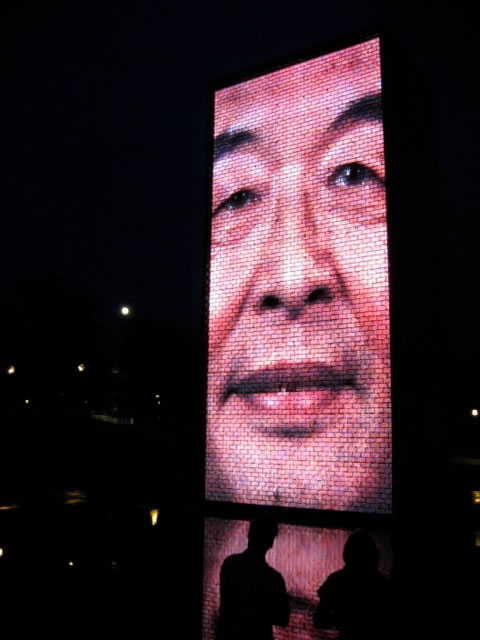
When you spend time by yourself,
as I am often wont to do,
you can [and must] entertain yourself.
So I touch, listen, watch and contemplate what I’m seeing.
Being one involved with retail design,
some of the most fascinating insights come from simply watching people —
in a store.
What are they doing,
what are they looking at,
how do they get in,
who are they talking to?
And crucially, how are they being spoken to,
and who cares about them —
what care are they being offered?
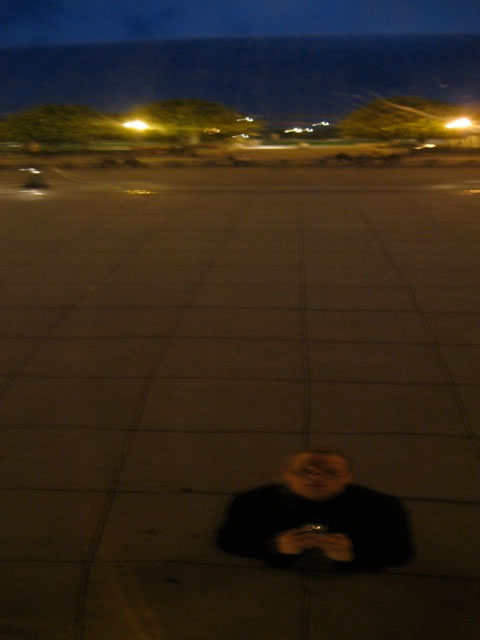
The skin of a person, their face, is a telling —
it’s a story unto itself.
Looking in — you can see journey,
you can see pain,
joy,
happiness,
heart ache,
exhaustion or exhilaration.
It all shows through.
A sky pavilion, Bhutan.

So too, in a building —
there are stories to be told;
you can see in,
and you can see through.
And since buildings invariably speak to the feelingness of the skin,
designed by a human,
there are signs from that person.
And there are signs and
signals in the character of the building —
what is being told?
As a designer that often deals with skins —
the epidermal rendering of the drawing of place,
and in the sensitivities to, and of, humans —
I think about the soul of the story within,
and what that might, without —
the outside.
The person, the place, their place in that place,
and the building of something in, and on, that place.
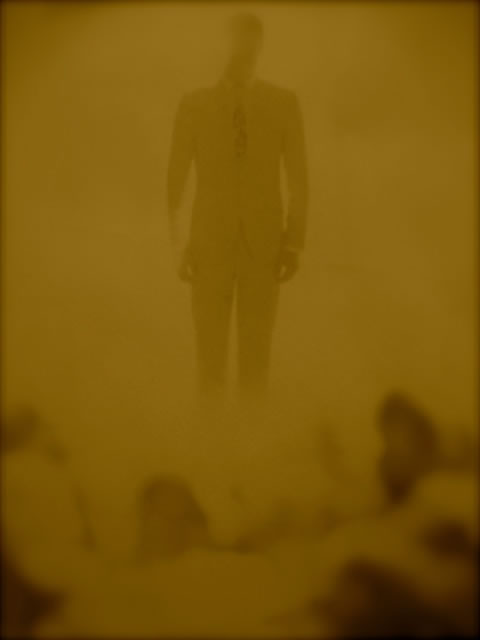
Working in first in NYC, then San Francisco,
I was surely studying people,
but I was also studying the touch of buildings —
what’s the story outside,
and what — within?
How do people touch buildings and the experiences inside, and how does the building, and the experiences inside, touch them?
There is a journey — people come from some place, many times from the outside of a built place, to the inside of a built place — and a good question would be what happens to them in that journey from one, to another —
out —
to in.
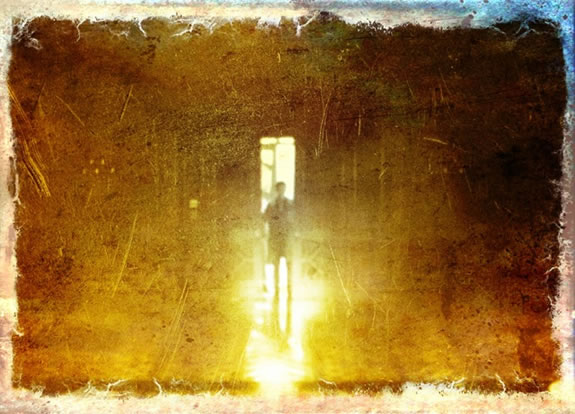
When I look at a former client and design partner, Sarah Tomerlin Lee‘s rendering of the transactional corridors of leParkerMeridien, NYC on 57th Street, it is beautiful, but it is dislocational — it’s like: “where am I now?”
A guest might wonder —
“where am I going,
where am I supposed to go,
can I go here?”
There, I was asked,
in French, once —
“Have you lost your way?”
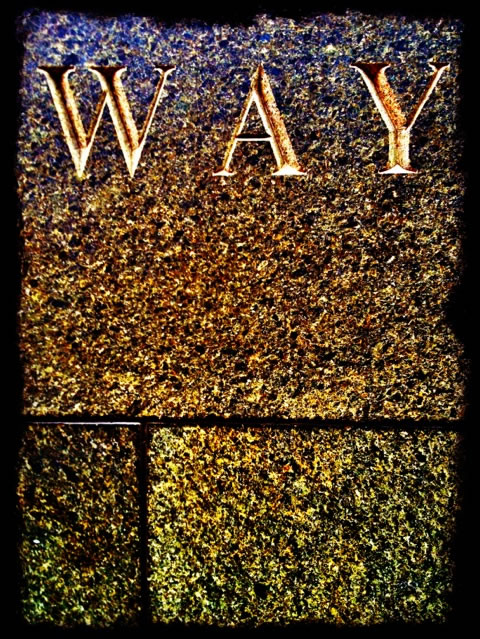
Sarah, who was a spectacle of design thinking, and “someone to watch, as well” –a woman who ranged from interiors and promotions at Bonwit Teller, to editorial work at Vogue had a career of six decades — and a lovely person to work with, along side.
I think that she might consider the notion of
being “loose” in a store,
or the story of a hospitality environment,
could be fun.
And worth the provocation.
That idea of “being dislocated could be a good thing.”
It’s adventuresome —
“I’m, well, actually, lost.”
“My way is at a loss. It’s, I am, gone.”
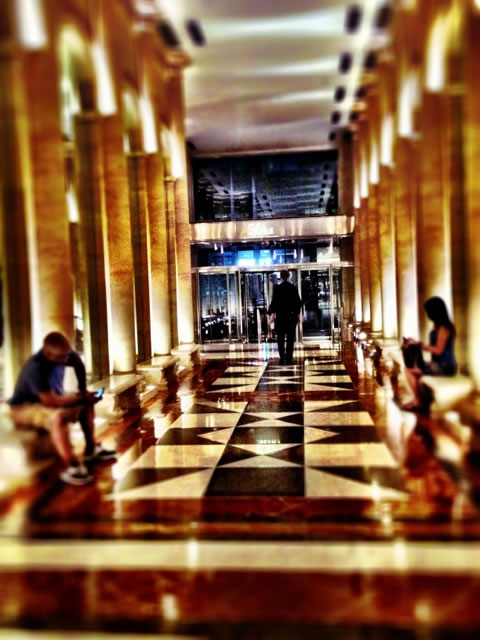
The better index to the compass of experience design
might be guidance, nurturing, care, warmth and humanity.
“I see this building, and I’m drawn in — I see the skin, and I feel like — I need to go in there.”
Same with people, I’m sure — I see this person, and instantly, intuition takes hold — instinct points or distracts, aligns or disjoints the navigation of connectedness. I go, or no —
I’m there, or, “no way, I’m going in there.”
Really, in a subtle way, like the face, it’s the beginning of that calling.
You see something, you’re drawn to it – that is a sliding range from 37,000 feet, 3,000 feet, 300 feet, 3 feet.
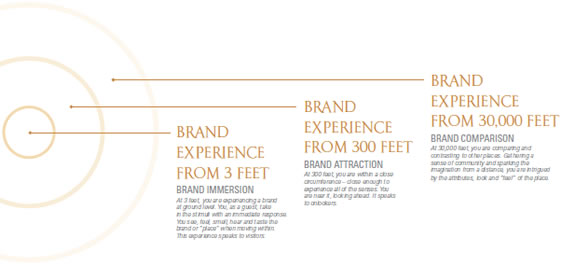
I am drawn, drawing in, to these fisher houses, in Köping, Sweden?
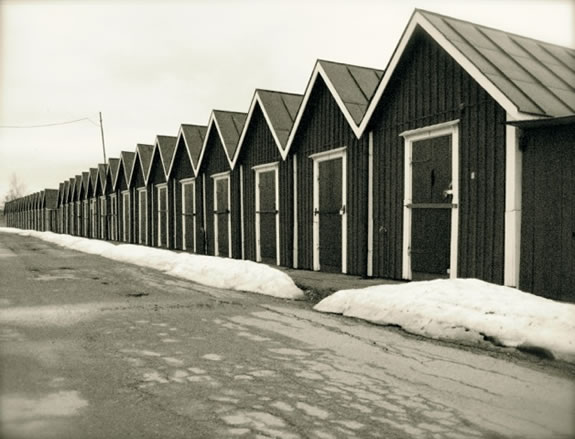
Does this big mirror draw me down the corridor to Rock Center?
Might depend on my relationship to mirrors, I’d suppose.
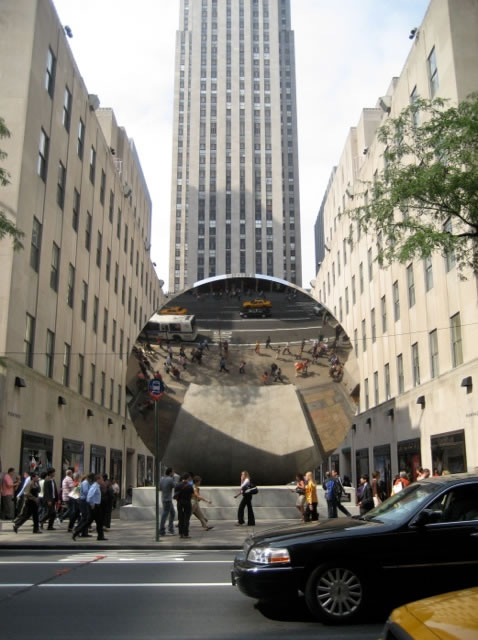
In a space like this, do I want to go through that door?
Of course I do.
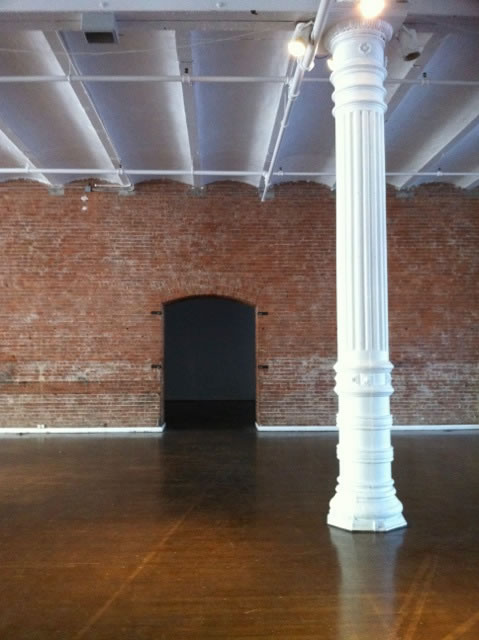
In San Francisco, I was studying some other locations — like Neiman’s flagship, downtown. The skin is a sheathing of modernist hard glazing, a box. There are masonry details, walls and cladding — but the glass box is the opening — four stories of open light, then to a massive stained and recovered glass installation. The interior is baroque and curlicued with scrollery — but somehow, that opening works, inviting you in.
Upscale, but accessible —
below, past the mannequin,
you can see the box and the light beyond to Union Square,
all calligraphed with details rococo on the inside.
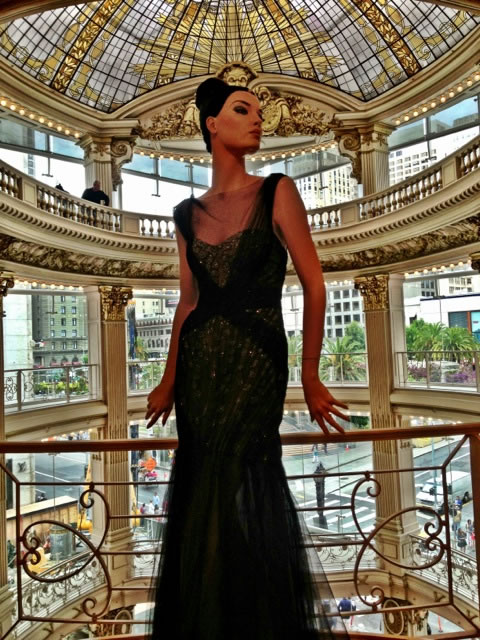
A massive oval of restored glass,
looking up the atrium from the ground floor,
once past the box.
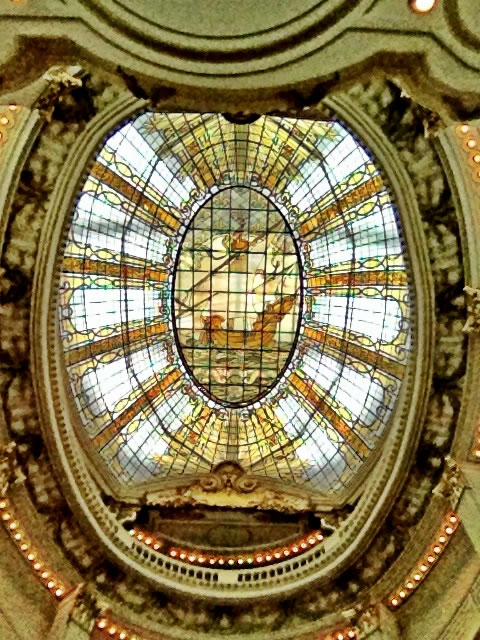
The top floor restaurant, looking down:
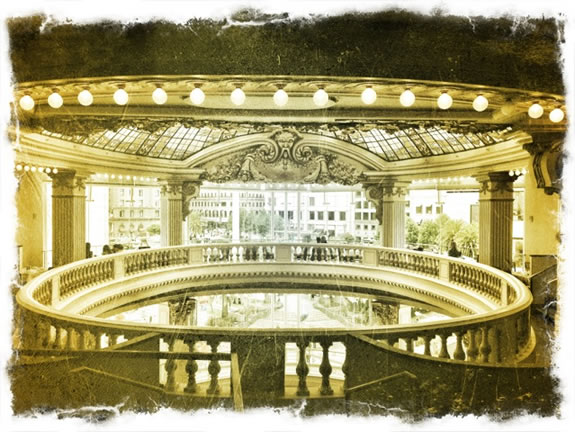
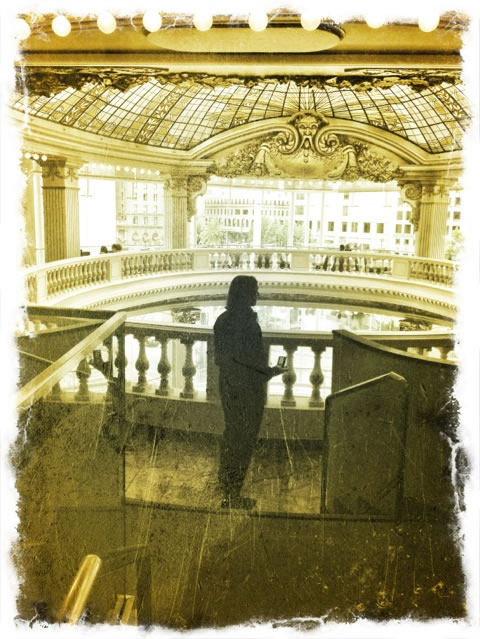
Another Neiman’s, out Walnut Creek way —
wind beckons the wafting of mesh in a layering of gesture, de-formalizing the skin to something less monumental and more friendly, even whimsically attractive.
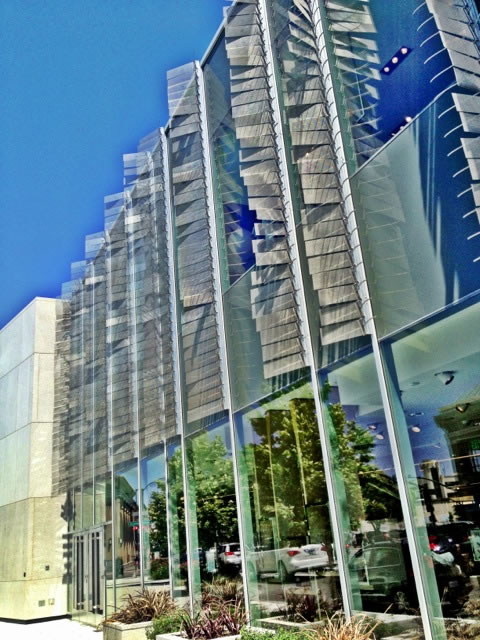
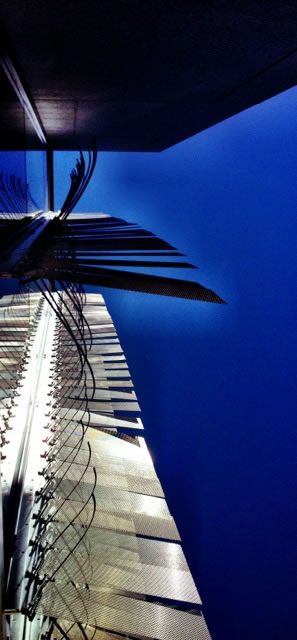
There is the story on the outside, foliate and green, at Urban Outfitters, that draws you into another tiering of processional unfolding and the passage through one door, to yet another. Simple, but theatrically dramatic — that drawing is almost entertaining, there — a play, played.
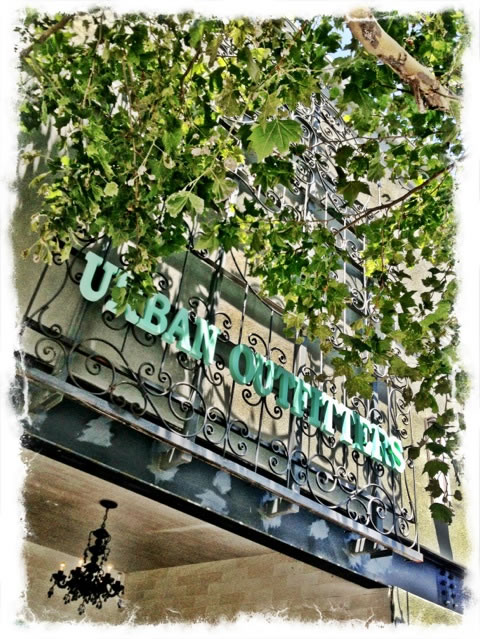
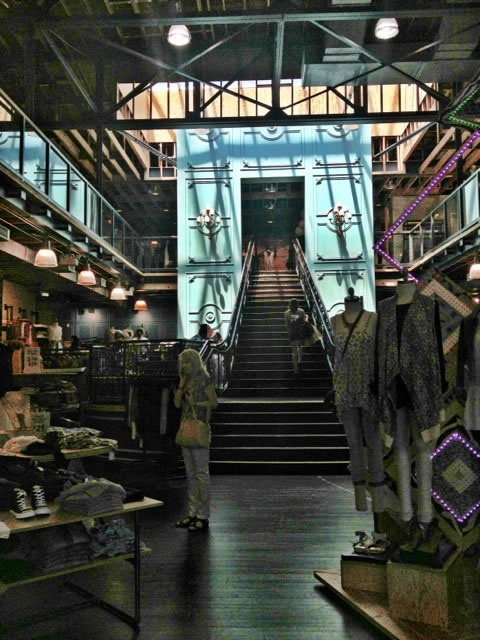
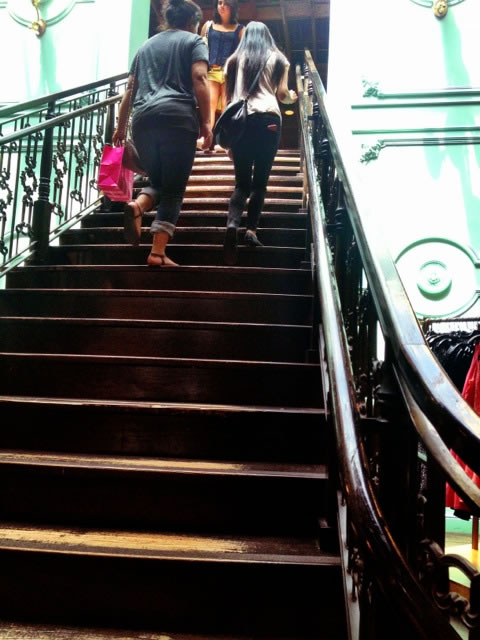
That might be part of the query — what is the “hello” of Nordstrom?
What ties, bind story from skin, to the sinuous arcing of their interior processions,
here, Pleasanton, CA.
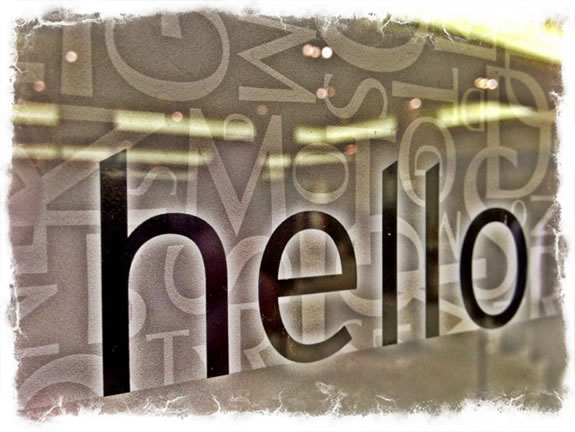
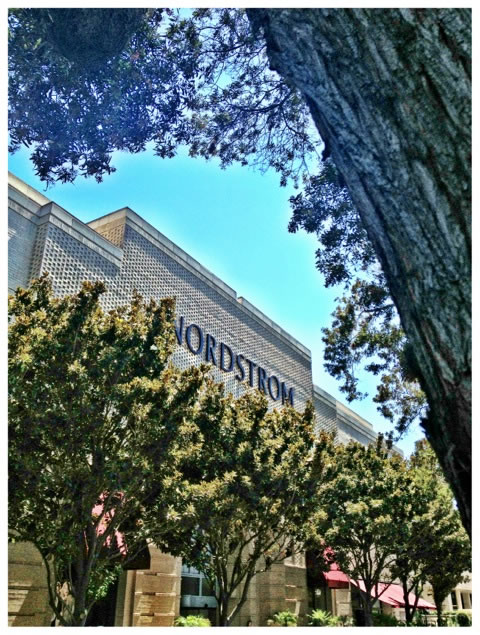
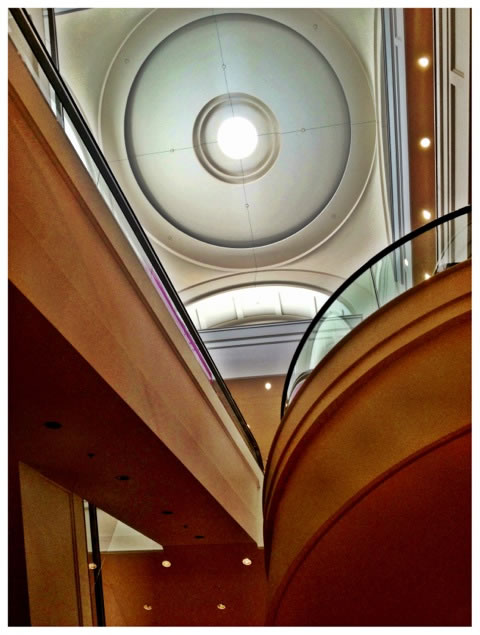
Prada, drawn to story, or distraction?
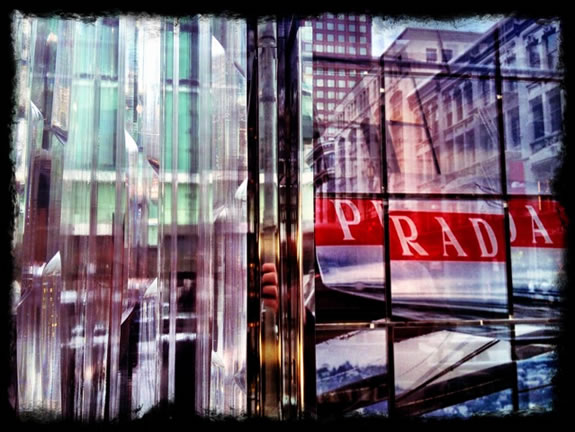
In a manner, the idea of the story on the outside leading to the inside — from building to face and back again is about the truth of impression, regardless of how we might take it, first off, instinct and intuition, the glance and the gut — it starts there, and it, as we all know, means a great deal.
So, in approaching a place — am I being invited in, drawn — a drawing line, drawing me in? Or, is there a barrier to that journey.
As designers, it’s that calling, to define that journey: the in, the out, the accessibly direct, the complexly maze-like; what, where and how do I get in and what happens to me once I’m in there?
The story unfolds —
do you hold it,
or do you care?
TIM | Union Square, San Francisco | Girvin
…..
G I R V I N | RETELLING RETAIL
DESIGNING THE STRATEGY OF SELLING :
BRAND STORYTELLING ENVIRONMENTS, EXPERIENCES = PLACES